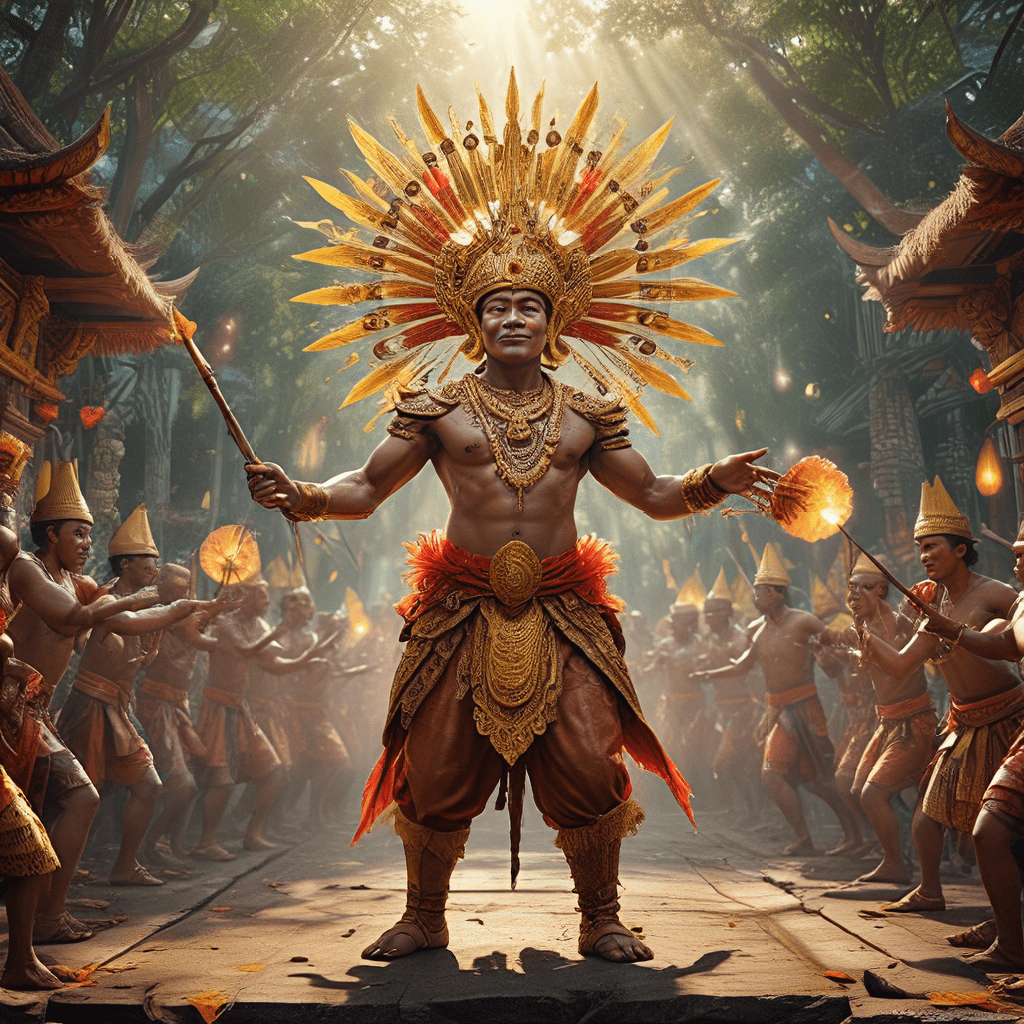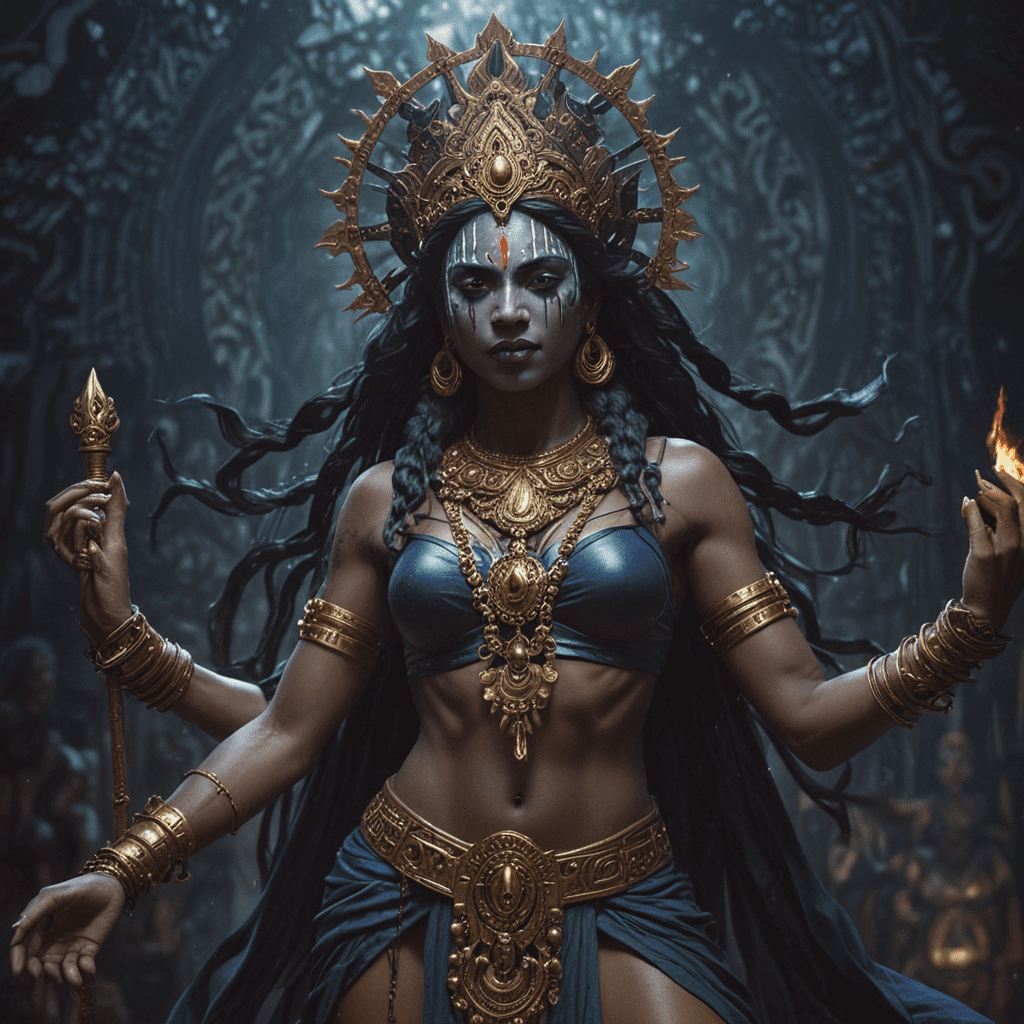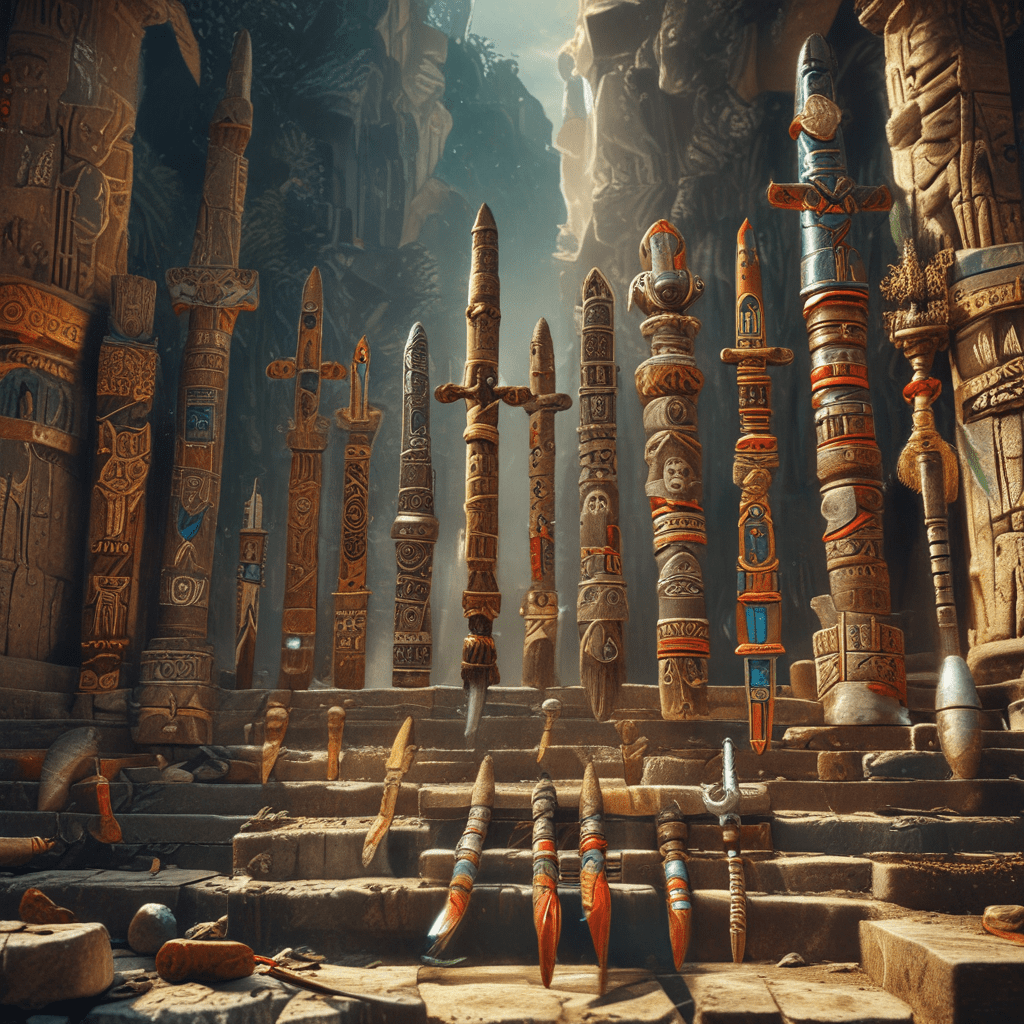Indonesian Festivals: Ancient Myth and Modern Celebration
I. The Power of Myth in Indonesian Culture
Indonesia, an archipelago nation with thousands of islands, boasts a rich tapestry of cultures, traditions, and beliefs. One of the most prominent threads in this tapestry is the power of myth. Indonesian myths and legends, passed down through generations, serve as a powerful force, shaping the nation's identity, beliefs, and cultural practices. These stories, often about gods, spirits, and heroes, provide explanations for natural phenomena, societal norms, and even the origin of life itself. They offer a sense of belonging and connect individuals to a shared history, weaving a vibrant narrative through time.
Indonesian mythology goes beyond mere storytelling; it forms the very foundation of the nation's cultural identity. From the captivating tales of the gods in ancient Javanese literature to the intricate rituals honoring spirits in Balinese ceremonies, myth permeates daily life. It guides individuals in their interactions with the natural world and the supernatural realm, offering a roadmap for understanding the complexities of life.
II. The Role of Deities and Spirits in Indonesian Folklore
Indonesian mythology is a vibrant ecosystem of deities, spirits, and mythical creatures, each with their unique roles and influence. The stories of these beings are interwoven into the fabric of daily life, shaping customs, beliefs, and rituals.
One of the most prominent deities in Indonesian mythology is Sang Hyang Widhi, the supreme being, who is often seen as the embodiment of creation and the source of all life. Other deities, such as Bathara Guru (the king of the gods), Dewi Sri (the goddess of rice), and Dewa Baruna (the god of the sea), each hold dominion over specific domains, influencing natural forces, human affairs, and even the fate of nations.
Beyond the deities, Indonesian folklore is populated by a diverse cast of spirits, from benevolent nature spirits to mischievous forest goblins. These spirits are believed to inhabit the natural world, influencing the lives of humans. They can bring good fortune, protect people from harm, or even inflict misfortunes. To appease these spirits, Indonesians perform various rituals and offerings, seeking their favor and avoiding their wrath.
III. The Birth of Festivals: Weaving Myth into Ritual
The connection between myth and ritual is deeply intertwined in Indonesian culture. Many festivals, celebrated throughout the year, are rooted in ancient myths and legends. These festivals are not simply celebrations; they are acts of remembrance, honoring the deities and spirits who are believed to have shaped the world and human society.
Through vibrant ceremonies, music, dance, and offerings, Indonesians engage in a symbolic dialogue with the supernatural realm. Each ritual, carefully choreographed and imbued with meaning, serves as a bridge between the seen and the unseen, connecting the human world to the mythological realm. These festivals are a reminder of the power of myth, a potent force that shapes beliefs, guides actions, and binds communities together.
IV. From Creation Myths to Annual Celebrations: The Case of Nyepi
The Balinese festival Nyepi, a day of complete silence and introspection, offers a powerful example of the connection between mythology and festival. Nyepi is rooted in the myth of the "Kala Rau," a giant demon who emerged from the underworld and cast darkness upon the world. The gods, unable to fight the demon, sought a way to pacify him. They devised a plan—a day of complete silence and darkness, during which they would meditate and offer prayers. This, they believed, would appease the demon.
The festival of Nyepi echoes this myth. On this day, the entire island of Bali falls silent, businesses close, people stay indoors, and all forms of entertainment and activity are halted. This act of collective silence, much like the meditative silence of the gods, is believed to cleanse the world of negativity and appease "Kala Rau."
Nyepi is not just a day of quiet; it is a day of profound spiritual reflection. The darkness and silence, echoing the myth of "Kala Rau," become a powerful metaphor for introspection, allowing individuals to connect with their inner selves and seek renewal.
V. The Influence of Javanese Mythology in Rituals and Festivals
Javanese mythology, with its intricate tales of gods, spirits, and heroes, has profoundly influenced the rituals and festivals of the Javanese people. The Mahabharata, an epic Indian tale, has found a special place in Javanese culture, inspiring a wealth of literature, art, and performance.
The story of the Pandava brothers, their struggle against the evil Kauravas, and the teachings of Krishna, the divine charioteer, resonate deeply with Javanese values and beliefs. Javanese festivals, like the Sekaten festival, which celebrates the birth of the Prophet Muhammad, find inspiration in the themes of peace, justice, and righteous conduct, themes that resonate with the epic tale of the Mahabharata.
The influence of Javanese mythology is evident in the elaborate rituals and ceremonies that accompany many festivals. Traditional dances, like the Bedhaya, are a powerful example of the interplay of myth and performance. The dances, often performed in royal courts, tell stories of gods and heroes, affirming Javanese traditions and belief systems.
VI. Mythological Themes in Balinese Festivals: The Power of Offerings and Rituals
Balinese festivals are a vibrant tapestry of color, sound, and ritual, deeply intertwined with the island's rich mythology. These festivals are more than mere celebrations; they are acts of reverence and communion with the divine, seeking the blessings of gods and spirits.
Offering plays a central role in Balinese festivals, symbolizing devotion, gratitude, and the desire to appease the supernatural realm. These offerings, often crafted from intricate arrangements of flowers, fruits, and incense, are presented to deities and spirits, seeking their favor and protection. The act of preparing and presenting these offerings is a ritual in itself, a form of meditation and connection with the divine.
The annual Galungan celebration, a major festival in Balinese culture, exemplifies the power of myth and ritual. This festival, which celebrates the victory of Dharma (righteousness) over Adharma (unrighteousness), is rooted in the Balinese myth of the "Kala Rau," the demon who threatened to destroy the world. The victory of the gods over "Kala Rau" symbolizes the triumph of good over evil and the cyclical renewal of life.
Balinese festivals are infused with a powerful sense of community. The entire village participates in the festivities, sharing in the rituals, dances, and offerings. Each individual plays a role in these events, united by a shared belief system and a desire to honor their ancestral roots.
VII. The Significance of Ancestor Worship in Indonesian Celebrations
Ancestor worship is deeply ingrained in Indonesian culture, influencing celebrations and rituals across the archipelago. Indonesians believe that their ancestors continue to guide and protect them from the spirit world. Festivals often include rituals honoring ancestors, seeking their blessings and guidance.
The annual "Arwah" (Ancestor) festival, celebrated in various parts of Indonesia, exemplifies this tradition. During this festival, families gather to remember their ancestors, offering food, flowers, and incense to their spirits. This act of remembrance is a way to acknowledge the vital role ancestors have played in shaping family history and cultural traditions.
The belief in the power of ancestors extends beyond religious and spiritual realms, influencing social norms and behavior. Respect for elders and ancestors is often emphasized, shaping interpersonal dynamics and familial relationships. It is believed that honor paid to ancestors brings blessings and prosperity to the family.
VIII. Theories on the Origins of Indonesian Festivals: Historical and Mythological Perspectives
The origins of Indonesian festivals are shrouded in a blend of historical and mythological narratives. While some festivals can be traced to specific historical events or the adoption of foreign religious practices, many others stem from ancient myths and legends that have been passed down through generations.
Historians point to the influence of Hindu and Buddhist traditions, which were introduced to Indonesia during the ancient trade routes. These beliefs, with their elaborate rituals and ceremonies, played a significant role in shaping Indonesian festivals. The spread of Islam in Indonesia also brought its own cultural and religious practices, further enriching the tapestry of Indonesian celebrations.
Mythological perspectives offer a different lens through which to understand the origins of Indonesian festivals. These stories, often about gods, spirits, and heroes, provide explanations for the origins of festivals, connecting them to the very creation of the world or the establishment of societal norms. These myths offer a potent sense of meaning and purpose, giving individuals a sense of belonging within a larger narrative of creation and continuity.
IX. The Enduring Legacy of Myth in Modern Indonesian Celebrations
While the influence of modernization has brought about changes in Indonesian society, the power of myth continues to endure in modern celebrations. Though new practices and customs have been introduced, the core beliefs and traditions embedded in ancient myth remain a powerful force in shaping cultural identity.
Modern festivals often incorporate elements of traditional rituals and ceremonies, preserving the legacy of myth and connecting individuals to their cultural heritage. The art of storytelling, a powerful tool for sharing myths and legends, continues to play a vital role in preserving these stories for future generations.
The enduring legacy of myth underscores its significance in Indonesian culture, providing a framework for understanding the world, navigating social interactions, and celebrating the unique cultural heritage of the nation.
X. Mythology and Festivals: A Tapestry of Cultural Identity
Indonesian festivals are a vibrant tapestry of ancient myths, traditions, and modern celebrations. They offer a glimpse into the nation's rich cultural heritage, showcasing the profound connection between myth, ritual, and cultural identity.
Through these festivals, Indonesians connect with their ancestors, honoring their legacy and seeking their guidance. They engage with the supernatural realm, seeking the blessings of deities and spirits, and reaffirm their belief in the power of myth. These celebrations serve as powerful reminders of the enduring legacy of myth in shaping Indonesian society and fostering a sense of belonging within a shared cultural narrative.
FAQ
What are some popular Indonesian festivals?
Some popular Indonesian festivals include Nyepi (Bali), Galungan (Bali), Sekaten (Java), Idul Fitri (Muslim), and Chinese New Year (for Chinese communities in Indonesia).What are some of the common themes found in Indonesian mythology?
Common themes in Indonesian mythology include the creation of the world, the battle between good and evil, the importance of harmony with nature, and the role of ancestors.How do Indonesian festivals help preserve cultural identity?
Festivals provide opportunities to share and celebrate cultural traditions, keeping ancient myths and legends alive for future generations. They also foster a sense of community and belonging among Indonesians.
What are some ways modernization has impacted Indonesian festivals?
Modernization has led to changes in the way festivals are celebrated, with the introduction of new technologies and practices. However, the core beliefs and traditions embedded in ancient myths continue to influence these celebrations.Why are myths so important in understanding Indonesian culture?
Myths offer a rich lens through which to understand Indonesian beliefs, customs, and values. They provide a framework for understanding the world, shaping social interactions, and connecting individuals with their cultural heritage.


